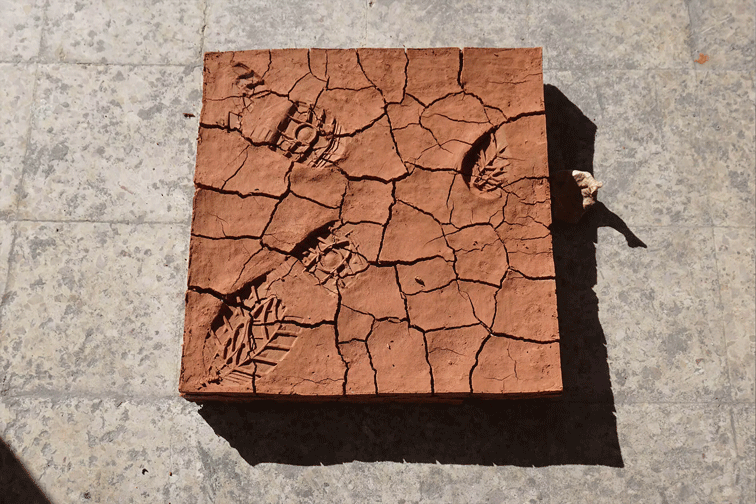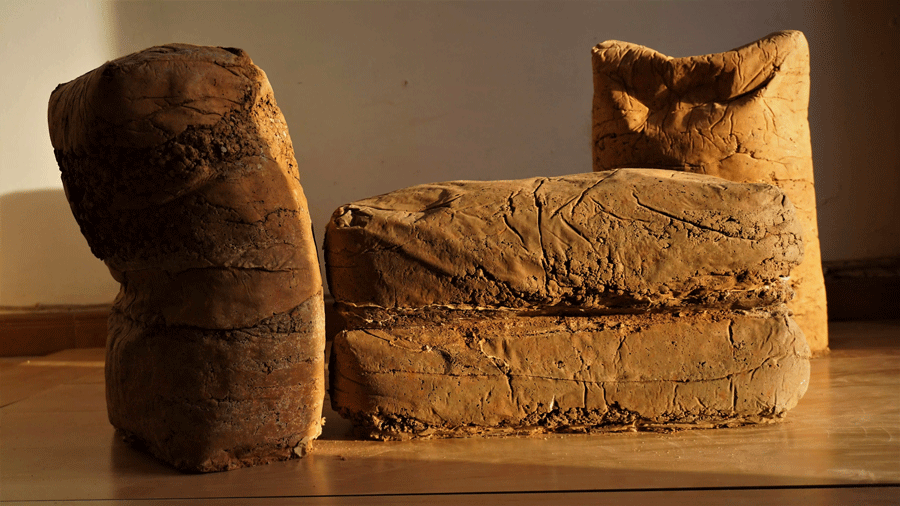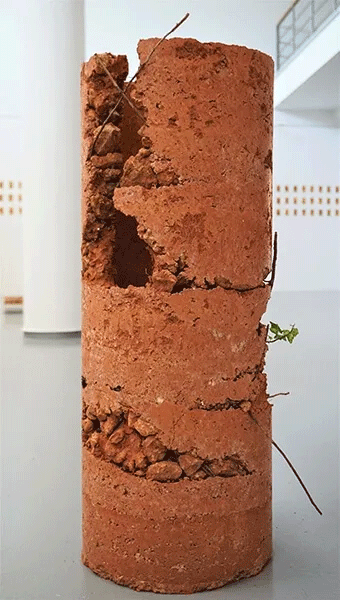Whenever we speak of climate change, a lingering sensation of uncertainty emerges. There are a multitude of areas affected by weather instability and most of them are deeply rooted in our contemporary way of life. One of these areas is the constant impact that the climate crisis has on soil erosion and land fertility—the true pillars of ecosystem function and food security.
A study done by Joris P.C. Eekhout traces this upward trend of land erosion to the end of the 21st century which is characterized by aggressive agricultural expansion and deforestation. Yet some methods—explored in this study—can slow down the effect of this destructive wave. By implementing reforestation, soil conservation methods and agricultural land abandonment, the study predicts that the effects of weather shifts on land will diminish.

Land degradation is a growing global trend jeopardizing the function and capabilities of ecosystems to provide water retention, provision of habitat and nutrient cycling. This incapacity of the ecosystems produces soil erosion which mostly affects the fertile top soil layers essential for the productivity of agroecosystems and food security.
A study conducted by the United Nations Convention to Combat Desertification only comes to reinforce the statements above. The report states that food supply disruption and food insecurity will be more frequent if regenerative agricultural practices are not applied. The scenarios illustrated in the report show that if nothing is done before 2050, 12% to 14% of agricultural, pasture and grazing land and natural areas will persistently decline in vegetative productivity.
“We clearly need to stop converting land . . . It really is not the optimal way forward. It’s a pathway to disaster,” Barron Joseph Orr, lead scientist at UNCCD states. “The numbers are very clear, in population and the model of increasing yield: They’re not going to line up. We’re not going to make enough changes in yield to bridge that. So that means we have to do other things [such as] sustainable but intensified production.”
This issue is not left unnoticed by the art community. Portuguese artist Jéssica Burrinha's "living sculptures" composed of compressed soil and earth, draw a parallel connection to the consequences of urbanization and industrialization on the soil and land.

In one of Burrinha's most recent works entitled Naturalis Optio, both aesthetic and concept investigated through the work, showcase an unwavering commitment to Climate Action and protecting Life on Land—two of the United Nations Sustainable Development Goals. When you look at the visual effect of the installation, you are confronted with these solid and familiar-looking objects made of compressed earth, but when looking closer you can notice several different tonal and material changes. Also, by examining the concept we are confronted with the disastrous reality of the impact that cement industries have on soil fertility, enticing us to look at new and sustainable ways to interact with the land that surrounds us.
“It is urgent to find other more sustainable and ecological alternatives for our environment, which lead us to question our environmental and social actions and concerns.” Burrinha writes.
"Naturalis optio is a proposal for a real awareness of what we are currently experiencing on our planet, which forces us to look for a healthier and more ecological option. In the hands of those who know, the land can turn to gold.”
Most of Burrinha’s sculptures have a common thread, and even though each sculpture has its unique aesthetic, they all express a distinctive desire to investigate the potential of raw and compacted earth. The simplicity and purity that you can only get from natural materials attracts the viewer to look closer. The living aspect that you can witness through the regeneration of natural elements—weaved within the sculptures— and the degradation of the compressed organic materials, transports you from the white cub atmosphere of the gallery to the sensorial experience one has when in nature. Burrinha’s collection of sculptures is a searing reminder of the attractive and ancient connection individuals have with natural elements and how important it is to preserve this holistic understanding.

“The impact and consequences of unbridled urban growth are causing irreversible repercussions on global ecosystems. As urban areas continue to grow rapidly, rural areas are being swallowed up by concrete, a major contributor to the high emissions of carbon dioxide into the Earth’s atmosphere.” The artist writes. “Soil waterproofing, caused by the cluster of houses that cover the fertile land, is stifling the fertility of the land. Preventing plants from growing and harming natural resources.”
Furthermore, the artist's practice has awarded her several recognitions. She has four Honourable Mentions, one in 2016 at the Mertolarte Contest, one in 2017 and 2019 at Salvaterra de Magos, in the Infante D. Luís Award for Arts and in 2021 at the 4th International Biennial of Gaia Art. Also under her belt, the artist has had several exhibitions in Portugal and Spain such as in the Art Madrid'18 Contemporary Art Fair, at Galeria Arte Periférica, and at the International Museum of Contemporary Sculpture, Santo Tirso.
The continuous wave of land degradation contributes to several major contemporary issues such as forced migration, biodiversity loss, species extinction and land resource conflicts. As with most of the issues we face today, the most vulnerable communities—including women, smallholder farmers, rural poor, youths and Indigenous peoples—are disproportionately affected. Sculptors like Burrinha smoothly and unapologetically bring the conversation forward, making us connect with the issue almost unconsciously.
See more of Burrinha’s work here.
